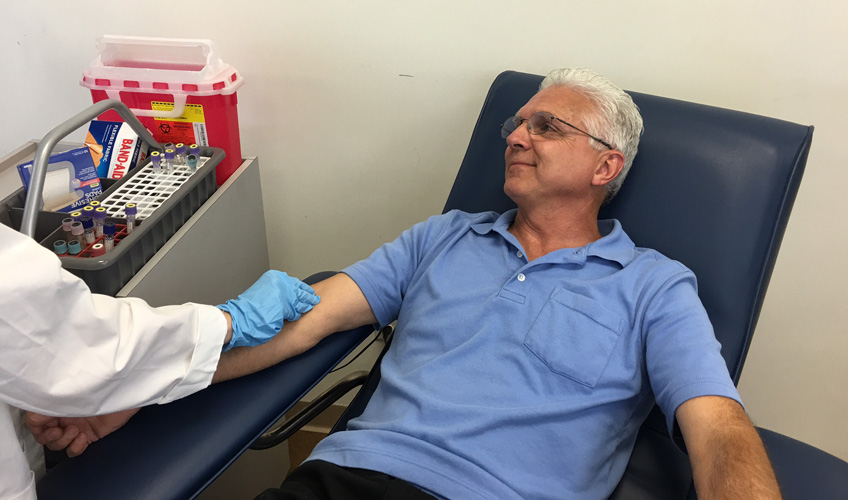What Does Northeast Medical Institute - New Haven Campus Phlebotomy Course & Cna Class Mean?
Wiki Article
Northeast Medical Institute - New Haven Campus Phlebotomy Course & Cna Class Can Be Fun For Everyone
Table of ContentsNortheast Medical Institute - New Haven Campus Phlebotomy Course & Cna Class for BeginnersThe smart Trick of Northeast Medical Institute - New Haven Campus Phlebotomy Course & Cna Class That Nobody is DiscussingAll about Northeast Medical Institute - New Haven Campus Phlebotomy Course & Cna ClassEverything about Northeast Medical Institute - New Haven Campus Phlebotomy Course & Cna ClassThe Buzz on Northeast Medical Institute - New Haven Campus Phlebotomy Course & Cna ClassNortheast Medical Institute - New Haven Campus Phlebotomy Course & Cna Class Things To Know Before You Get This
The usage of such devices ought to be accompanied by other infection avoidance and control techniques, and training in their usage.For settings with low sources, price is a driving consider purchase of safety-engineered gadgets - PCT Classes. Where safety-engineered tools are not offered, skilled use a needle and syringe is appropriate. Unintentional exposure and particular details regarding an incident must be tape-recorded in a register. Support services need to be promoted for those that undergo unintended exposure.
Among the vital markers of quality of care in phlebotomy is the involvement and cooperation of the patient; this is mutually useful to both the health worker and the patient. Clear information either created or verbal should be available to every client who goes through phlebotomy. Annex F supplies example message for explaining the blood-sampling procedure to a person. In the blood-sampling space for an outpatient division or center, supply a comfortable reclining couch with an arm rest.
Northeast Medical Institute - New Haven Campus Phlebotomy Course & Cna Class Fundamentals Explained
Make sure that the indicators for blood tasting are clearly defined, either in a composed method or in documented guidelines (e.g. in a research laboratory type). At all times, adhere to the techniques for infection prevention and control noted in Table 2.2. Infection avoidance and control methods. Accumulate all the devices required for the treatment and place it within secure and very easy reach on a tray or cart, guaranteeing that all the items are plainly visible.Introduce on your own to the patient, and ask the person to mention their full name. Check that the research laboratory type matches the person's identification (i.e. match the client's details with the laboratory kind, to ensure precise recognition).
Make the client comfortable in a supine placement (preferably). Area a tidy paper or towel under the person's arm. Discuss the examination to be carried out (see Annex F) and obtain spoken approval. The client has a right to refuse a test at any time before the blood sampling, so it is necessary to make certain that the patient has understood the treatment.
Some Known Questions About Northeast Medical Institute - New Haven Campus Phlebotomy Course & Cna Class.
Expand the client's arm and inspect the antecubital fossa or forearm. Find a vein of an excellent dimension that shows up, straight and clear. The diagram in Area 2.3, reveals typical positions of the vessels, however lots of variations are possible. The mean cubital capillary exists between muscular tissues and is normally one of the most easy to puncture.DO NOT place the needle where blood vessels are diverting, because this boosts the possibility of a haematoma. Finding the blood vessel will certainly aid in establishing the correct size of needle.
Samplings from central lines carry a threat of contamination or erroneous laboratory test results. It is appropriate, yet not excellent, to draw blood specimens when initial introducing an in-dwelling venous tool, prior to connecting the cannula to the intravenous liquids.
Northeast Medical Institute - New Haven Campus Phlebotomy Course & Cna Class Can Be Fun For Everyone
Failing to permit adequate contact time increases the risk of contamination. DO NOT touch the cleaned site; in certain, DO NOT place a finger over the capillary to lead the shaft of the exposed needle.Ask the individual to create a clenched fist so the capillaries are extra noticeable. Get in the capillary quickly at a 30 degree angle or much less, and continue to introduce the needle along the vein at the simplest angle of entrance - Phlebotomy Courses. When adequate blood has been gathered, release the tourniquet prior to taking out the needle
Indicators on Northeast Medical Institute - New Haven Campus Phlebotomy Course & Cna Class You Need To Know
Withdraw the needle gently and apply mild pressure to the website with a clean gauze or completely dry cotton-wool ball. Ask the person to hold the gauze or cotton woollen in area, with the arm extended and increased. these details Ask the patient NOT to flex the arm, because doing so triggers a haematoma.
Not known Details About Northeast Medical Institute - New Haven Campus Phlebotomy Course & Cna Class
Do not push the syringe plunger since extra stress enhances the risk of haemolysis. Where feasible, keep televisions in a rack and relocate the shelf in the direction of you. Inject downwards into the proper coloured stopper. DO NOT get rid of the stopper because it will certainly launch the vacuum. If the example tube does not have a rubber stopper, inject very gradually right into the tube as lessening the pressure and velocity used to transfer the sampling decreases the danger of haemolysis.
Report this wiki page